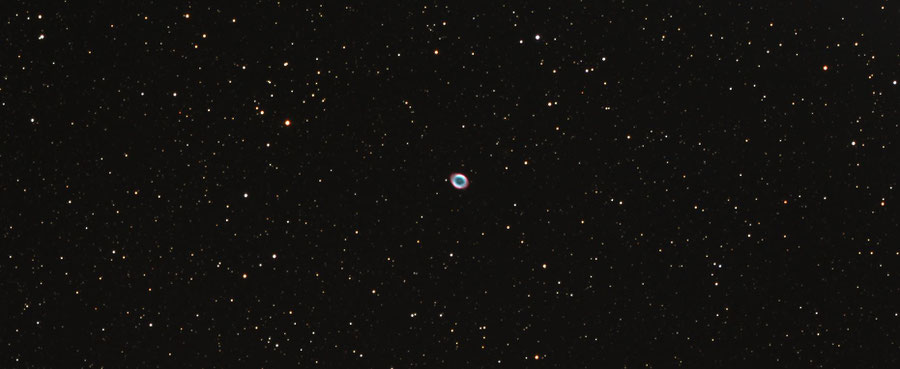
Don't do this
Three hours before twenty guests arrive at a dinner party at a Corsican winery, one should not agree to clean and collimate the host's dusty, dilapidated 8 inch Newtonian, in order to show twenty curious guests some exciting celestial objects. The poor instrument showed signs of incorrect use. The owner had stored it in the attic for many years.
When bright, easy objects are not accessible on the sky, it is unwise to attempt to show a faint planetary nebula to guests in a festival mood, - people who have no experience with astronomical telescopes. I made this mistake when the only region of sky visible was the Zenith, and it was hugged by towering trees. Lyra was visible between the tree crowns.
Of the twenty guests, only one was able to see the Ring Nebula. He was a painter and sculptor from Paris. He became so ecstatic upon seeing the ring that he teared up. So perhaps the event was a success after all :-)
Enriches the Galaxy
Solar type stars end their multi-billion year lives in the form of an expanding bubble of helium, carbon, oxygen,
sulphur, nitrogen and other elements less massive
than iron. Old solar-type stars throw off all the gas that surrounds their dense helium core. When the core is finally exposed, the enormous shells of discarded gas are irradiated. The are called planetary nebulas, and they enrich the galaxy's portfolio of elements which have proton numbers between hydrogen and iron. Supernovas enrich the galaxy with iron and heavier elements.
20 km/s
The star in the middle of the Ring Nebula blew off its outer gaseous layers 4000 years ago, and the nebula is expanding at 20 kilometers per second. Expanding shells of gas remain invisible as long as they are not ionized by intense ultraviolet light. The star's naked core illuminates the enormous expanding cloud of gas with ultraviolet radiation. The UV-wavelengths excite atoms in the nebula which then re-emit the energy in longer wavelengths of visible light. The colors depend on which elements are present. In the photo, blue gas in the center of the nebula is helium. Surrounding helium is hydrogen and oxygen. The outermost red color is nitrogen and sulphur.
The Ring Nebula is approximately one light-year in diameter and 2000 light-years distant.
